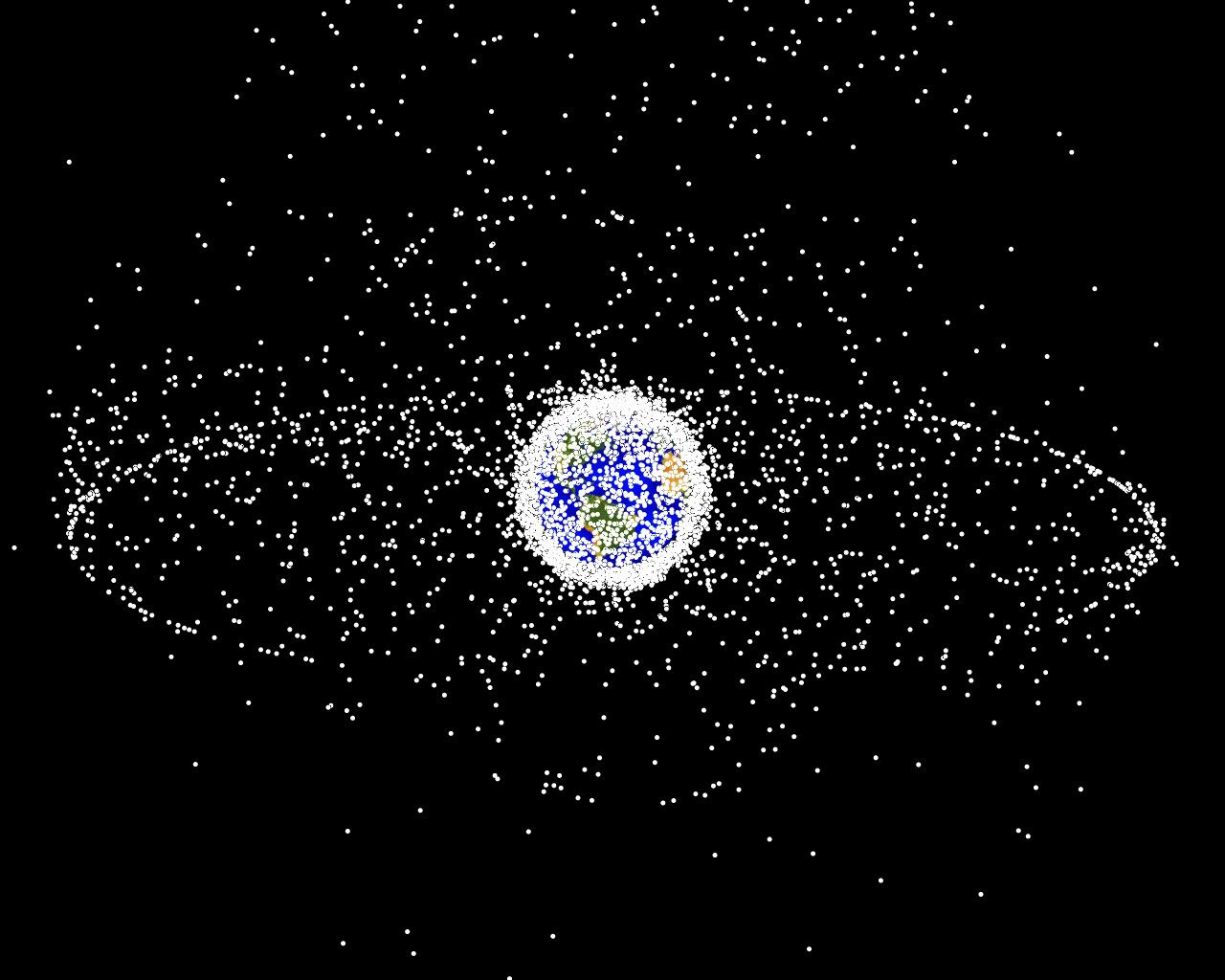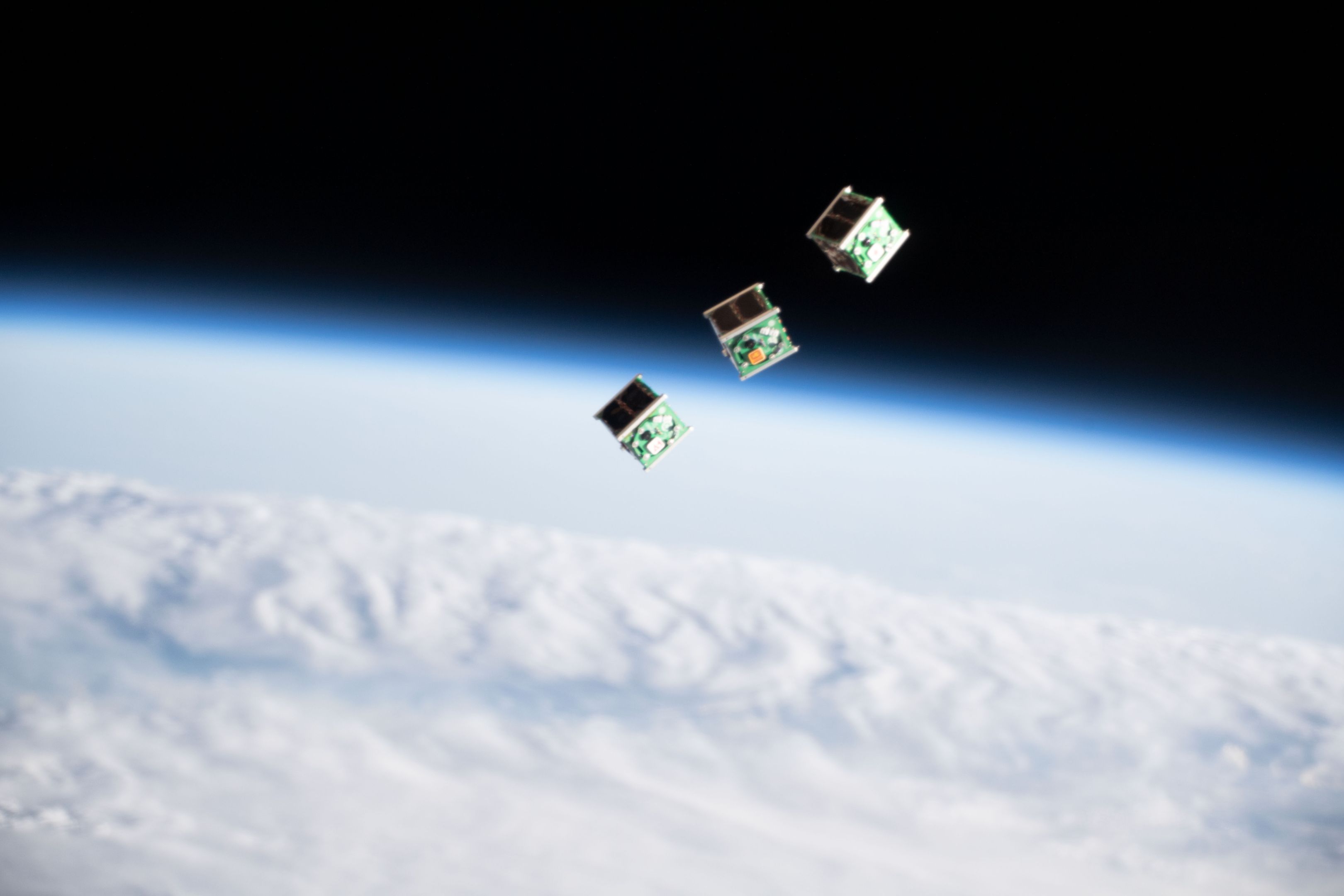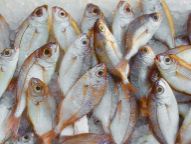Protecting our night sky

Image credit: NASA
In summary
- Opinion piece by Swinburne Chief Scientist, Professor Virginia Kilborn
- An abridged version was published in The Age
When we think about preserving the natural environment, we aim to protect wilderness regions like forests and oceans. But rarely do we look up at the stars and think about space as a kind of pristine wilderness. Considering the millions of pieces of space junk now in orbit around Earth and the thousands of satellites being launched each year, it’s time to turn our attention to preserving the natural wonder of the night sky.
Without action, over the next decade the night sky as we know it will change drastically. Where once we saw constellations of stars, we will see moving constellations of satellites - hundreds and maybe thousands of them moving across the sky. The magic of a shooting star will be lost. The constellations your parents once pointed out will be harder to find, and as Kamilaroi astrophysicist Krystal De Napoli has explained, the vital reference points that our First Nations astronomers have relied on for tens of thousands of years will no longer be visible. Astronomers are already dismayed as their view of the Universe is increasingly masked via optical and radio emissions from the thousands of objects overhead, making it more difficult to conduct paradigm-shifting research.
When it comes to access to space, we are undergoing a technological revolution. Once the domain of multi-national companies and government agencies, the new space race is now dominated by agile and comparatively young companies taking advantage of small satellite technologies, such as ‘CubeSats’ – nanosatellites the size and shape of a Rubik's cube.

Image credit: NASA
These smaller satellites allow companies to quickly test new technologies in space and take less energy to launch to their lower altitude orbits. While they offer significant benefits to us on Earth, such as monitoring weather patterns and natural disasters, and providing internet access to remote communities, they are also less reliable, have higher failure rates, and shorter lifespans than previous satellites.
We’re seeing the advantages of new design and advanced manufacturing technologies reducing the cost of sending satellites into orbit. But we should also be concerned about disposable space hardware going down the same path as other technologies did a generation ago, for example with the advent of low-cost plastics. Plastics have allowed for the development of low-cost products, but the lack of life-cycle planning means plastic waste pollution is prevalent across the planet. We need to avoid this short-term thinking when it comes to satellites.
Rather than launching satellites designed for decades of use – for example the GPS navigation system, comprised of around 30 satellites – many companies are now planning for the launch of mega constellations of thousands of small satellites in Low Earth orbit. In the US alone, the Federal Communications Commission (FCC) is approving tens of thousands of satellites for launch. Astra has applied for 13,000 satellites, SpaceX has more than 3,000 satellites already launched and has sought approval for 9,000 more (but they’re looking at more than 30,000 in the future). Amazon has plans for over 3,000 more satellites, and Telesat plans for about 2,000 satellites with just a 10-year life span.
While small Low Earth orbit satellites are designed to burn up in the Earth’s atmosphere on the timescale of a decade or so, they deposit a higher concentration of aluminium than meteoroids. Over time, this will change the composition of the atmosphere. Whilst the weight of satellite debris currently entering the atmosphere is about 20 times less than that of meteoroids, satellites are mainly comprised of aluminium whilst meteoroids are less than 1 per cent of that element. The long-term effects of this change could include changing the albedo, or reflective nature of the atmosphere.
With so many satellites in finite orbits above us, there is also an increasing danger of collisions – causing an increase in the amount of space debris orbiting Earth. NASA is currently tracking more than 27,000 pieces of space junk and estimate there could be half a million pieces larger than 1cm in size; and over 100 million pieces smaller than a centimetre.
Actions are underway to tackle some of these issues. Here in Australia, space scientists, lawyers and policy experts from Swinburne University of Technology, EY, CSIRO’s Data61 and SmartCat CRC are urgently working on a regulatory framework for AI-enabled systems that can operate to avoid collisions, while other projects are looking to remove existing debris and defunct technology from orbit.
Further afield, the International Astronomical Union has formed the Centre for the Protection of the Dark and Quiet Sky from Satellite Constellation Interference to work with technology companies and policymakers to ensure we preserve the night sky for research. There is a new voluntary sustainability rating being promoted by the World Economic Forum, and the FCC has recently changed the regulations regarding LEO satellite disposal, requiring a much quicker re-entry into the atmosphere to ensure these low orbits don’t clog up our sky. These are positive steps, but we need to go further and think about whether we need to launch thousands of satellites in the first place.
The next frontier of space could involve sustainable fuels and the production of lighter and stronger materials with less waste. With better education, more research and worldwide regulation, we can find smarter ways to reuse, recycle and dispose of old technologies – as well as moderate how we launch the new. Finding better ways to do things now means both harnessing space to improve life on Earth and avoiding the destruction of one of our greatest assets – the night sky.
-
Media Enquiries
Related articles
-

- Technology
- Science
- Engineering
Victorian students drive green energy transition through international hydrogen competition
Swinburne’s KIOSC, in collaboration with Horizon Educational and Gippsland Tech School, co-hosted the Hydrogen Grand Prix in Melbourne.Friday 26 July 2024 -

- Science
Skin, scales and fish tails: using collagen to turn fish guts into gold
New research from Swinburne could transform the sector by converting high value collagen proteins from seafood by-products into cosmetics, food, and pharmaceuticals.
Tuesday 02 July 2024 -

- Astronomy
High school students work with Swinburne astronomers on the future of space
Swinburne’s Youth Space Innovation Challenge has inspired over 330 Australian teenagers to pursue a career in STEM.
Friday 26 July 2024 -

- Science
- Engineering
Submarines in the future could self-identify cracks and self-heal thanks to Swinburne researcher
Thanks to the work of Dr Nisa Salim from Swinburne University of Technology’s School of Engineering, future submarines could self-identify microcracks and self-heal using a new kind of carbon fibre reinforced polymer composites.
Monday 17 June 2024 -

- Science
Inaugural Swinburne-CSIRO Indigenous Research Fellow joins national water quality forecasting project
Swinburne University of Technology has appointed spatial ecologist Associate Professor Sally Waller as its inaugural Swinburne-CSIRO Indigenous Research Fellow...
Thursday 13 June 2024

